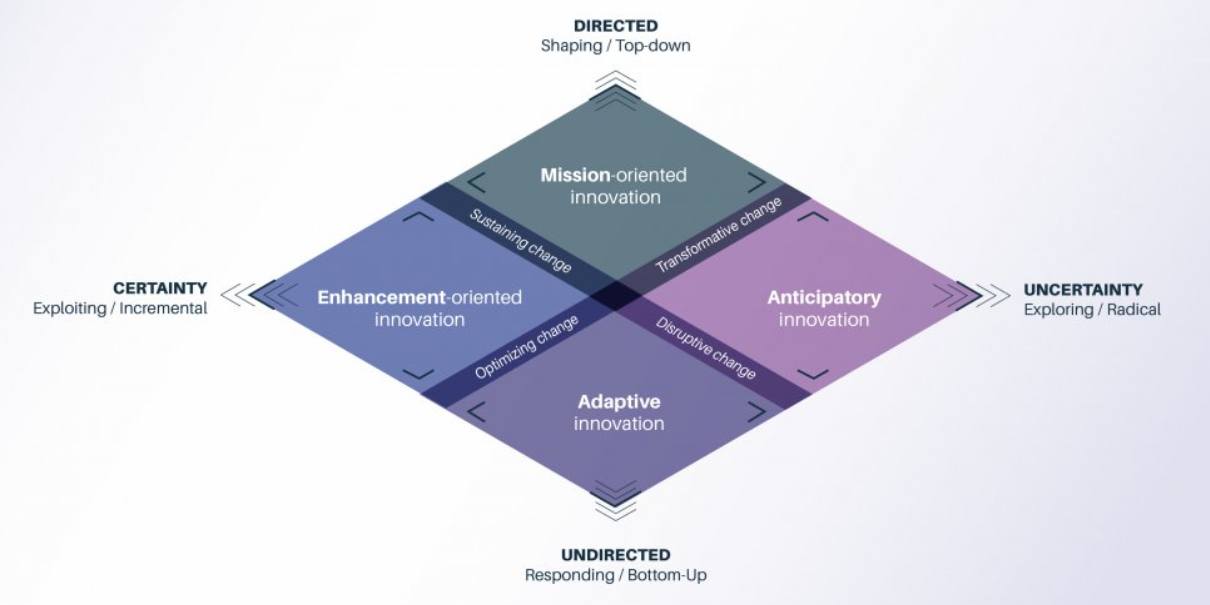 |||
|||

Fulcra
By RYAN J. A. MURPHY
 A presentation from Peter Jones and I at RSD9, virtually in Ahmedabad, India. Review the working paper. Check out the slides ▵
→
A presentation from Peter Jones and I at RSD9, virtually in Ahmedabad, India. Review the working paper. Check out the slides ▵
→
 A note on cybernetics and theory of mind. ▵
→
A note on cybernetics and theory of mind. ▵
→
This is a quickly-sketched model created from a breakout group conversation during the MUN School of Graduate Studies’ “Earth’s Carrying Capacity” dialogue.
This changed with the emergence of “Patient 31.”
Reuters’ coverage of the “Korean clusters” provided the world with a vivid glimpse of the volatility of COVID-19. One person showed poor judgement, and in turn caused cascading catastrophe in her communities.
Events like the COVID-19 pandemic are thankfully rare. Moments like these—when a lot happens all at once, and the experience is shared by a collective—shape future history like nothing else. We are learning a lot from this. Not only are epidemiologists now a famous profession, but we’re all learning exactly what it takes to provide good healthcare, what good governance looks like, how public health is community health, and more.
Patient 31 holds a simple lesson for systemics: the fragility of apparently solid social systems. South Korea seemed to do everything right. Yet, due to the volatile nature of this particular socio-health system, a single “free radical” caused immense damage.
Similar volatility is evident—but more subtle—in other social systems. Consider how memes spread. Our massive communities may seem immovable at times, but it’s clear that the wrong (or right) phenomena can spread rapidly and deeply.
Stay safe.
Anyone, anywhere can propose an idea. YouTube creators will help spread the word, and the best proposals could be put into motion with the help of businesses, policymakers, and and celebrities supporting the initiative.
The initiative will culminate in a summit in Bergen, Norway next October to share the solutions that came out of the effort. Countdown will work with a panel of experts and scientists to vet proposals, and the strongest will be turned into TED talks. The talks will be filmed at the summit in Norway, in front of “a hand-picked audience capable of turning those ideas into action,” according to a press release.
An interesting partnership, and yet another example of “crowdsolving”: trying to find solutions to wicked problems via the mobilizing power of the Internet.
I certainly expect to see some concepts from Drawdown on stage.
Chinaʼs 2017 decision to turn away Americaʼs trash has left the recycling industry reeling as it figures out what to do with all the packaging online shoppers leave behind.
Recycling is a funny thing. For me, it’s almost a guilt-free act. “Sure, I’m using all of these boxes, but they’re recycled, so who cares?” But increasingly recycling and the trash bin seem like equivalent destinations. It’s even imaginable that recycling is worse, because recycled objects might travel farther before being dumped into a landfill anyway.
“Itʼs very difficult for American material recovery facilities to satisfy that standard because Americans put plastic bags and chewing gum and bowling balls and dirty diapers and everything else you can imagine into the recycling containers,” Biderman says. The strict rules also apply to plastic and other recyclables, but cardboard and mixed paper have seen the sharpest drops in prices.
I’m tempted to blame people: “It’s too bad we can’t be more considerate. Have you ever looked in the recycling bins in public receptacles?” Et cetera. But really, we should be designing systems that make this easy—or incentivize good behaviours somehow. Either way, the current situation is insufficient:
There has also been a noticeable shift in the source of the cardboard, says Coupland: itʼs coming from peoplesʼ homes instead of brick-and-mortar businesses. Thatʼs bad news, since retailers are less likely to generate cardboard thatʼs too filthy to be recycled. Consumersʼ cardboard boxes are often mixed with other, dirty recyclables like ketchup bottles or soda cans that spill their contents over the cardboard. On average, about 25 to 30 percent of the materials picked up by a recycling truck are too contaminated to go anywhere but a landfill or incinerator, Coupland says.
Today former Secretary of State John Kerry and former California governor Arnold Schwarzenegger declared war on climate change. The two led an all-star cast of lawmakers and celebrities to launch an initiative called World War Zero, which aims to get individuals, businesses, and governments to drastically slash greenhouse gas emissions. The initiative, for now, boasts a lot of glitzy names without many details on how it will achieve its goal. Its bipartisan founding members — which include Bill and Hillary Clinton, Richard Branson, Jimmy Fallon, Cindy McCain, and Al Sharpton, and more than 70 other notable names — plan to hold 10 million “climate conversations” in 2020, The New York Times reported over the weekend.
Seems like an incredible effort. And it’s an excellent angle. “War”—when declared by major public figures—certainly catches the public attention.
Kerry compared the urgency of climate change to the challenges facing America during World War II. “When America was attacked in World War II we set aside our differences, united and mobilized to face down our common enemy,” Kerry said in a statement. “We are launching World War Zero to bring that spirit of unity, common purpose, and urgency back to the world today to fight the great threat of our time.”
Of course, actually waging war doesn’t always garner the unity or have the results we aim for, especially when it’s a war against a social issue.
Scary:
One issue identified on an unnamed carrierʼs implementation could allow any app on your phone to download your RCS configuration file, for example, giving the app your username and password and allowing it to access all your voice calls and text messages. In another case, the six-digit code a carrier uses to verify a userʼs identity was vulnerable to being guessed through brute force by a third-party. These problems were found after researchers analyzed a sample of SIM cards from several different carriers.
RCS is supposed to be a big deal. It’s fascinating how these system-wide policies can be messed up in microsystem implementations.
This is a great talk from Piret Tönurist of the Observatory on Public Sector Innovation.
One of the core issues of the talk is innovation doubt—the “if it ain’t broke, don’t fix it” mentality. To paraphrase Piret:
[…] why are we doing innovation at all? Maybe sometimes things are working fine, why do we think about innovation at all? We start off with four questions:
- Do you want to do things better?
- Do you have goals and purposes to fulfill?
- Do you want to address the needs of your stakeholders?
- Do you want to prepare for the risks and uncertainties that the future holds? If you answered “yes” to at least one of those questions, then your job is to do innovation—your job is to be a changemaker.
Also, the talk includes a neat model for different varieties of innovation, image courtesy of this post by Adrian M. Senn over on Medium: 
The Twttr prototype app gave me another feedback form today. It’s been my habit to complain, at every opportunity, about the trends page you have to engage with whenever you go to the Search tab. I feel a little bad for the designers and developers, because the beta is really all about how conversations on Twitter look and feel. Still, this feedback form was no different. Here’s what I wrote in the “Dislike” section:  I wish I could control the trends page.
It is the absolute worst part of my Twitter experience. It just feels… unhealthy. Like going through a grocery store magazine aisle. Sure, some of the headings are instructive or inspiring, but many are gross, irrelevant, or completely malignant gossip.
The experience is also invasive. Because trends are forced upon you when you intend on searching for something specific, and because they’re algorithmically-tunes to be as attention grabbing as possible, it’s easy to be distracted and forget why you even entered the search pane. I never explicitly consent to learning about celebrity gossip or US politics when I use Twitter. If I tap on some of those topics, it’s not because I want to. It’s because it’s malicious click bait. In turn, it’s corrupt to design an experience that drags the user through it repeatedly.
Sure, this content is viral. But shouldn’t we be inoculating against viruses, not encouraging them to spread?
I have a foreboding of an America in my children’s or grandchildren’s time—when the United States is a service and information economy; when nearly all the manufacturing industries have slipped away to other countries; when awesome technological powers are in the hands of a very few, and no one representing the public interest can even grasp the issues; when the people have lost the ability to set their own agendas or knowledgeably question those in authority; when, clutching our crystals and nervously consulting our horoscopes, our critical faculties in decline, unable to distinguish between what feels good and what’s true, we slide, almost without noticing, back into superstition and darkness…
Carl Sagan, as quoted by @Andromeda321 in this interesting Reddit thread on the regretful trends of the 2010s.
The thread discusses the growth of anti-intellectualism and conspiracy theories. I’m reminded of this timeless Medium post about how hating Ross in Friends became a meme in and of itself, reinforcing the persecution of science in the ’90s. From David Hopkins:
I want to discuss a popular TV show my wife and I have been binge-watching on Netflix. It’s the story of a family man, a man of science, a genius who fell in with the wrong crowd. He slowly descends into madness and desperation, led by his own egotism. With one mishap after another, he becomes a monster. I’m talking, of course, about Friends and its tragic hero, Ross Geller.
[…]
If you remember the 1990s and early 2000s, and you lived near a television set, then you remember Friends. Friends was the Thursday night primetime, “must-see-TV” event that featured the most likable ensemble ever assembled by a casting agent: all young, all middle class, all white, all straight, all attractive (but approachable), all morally and politically bland, and all equipped with easily digestible personas. Joey is the goofball. Chandler is the sarcastic one. Monica is obsessive-compulsive. Phoebe is the hippie. Rachel, hell, I don’t know, Rachel likes to shop. Then there was Ross. Ross was the intellectual and the romantic.
Eventually, the Friends audience — roughly 52.5 million people — turned on Ross. But the characters of the show were pitted against him from the beginning (consider episode 1, when Joey says of Ross: “This guy says hello, I wanna kill myself.”) In fact, any time Ross would say anything — about his interests, his studies, his ideas — whenever he was mid-sentence, one of his “friends” was sure to groan and say how boring Ross was, how stupid it is to be smart, and that nobody cares. Cue the laughter of the live studio audience. This gag went on, pretty much every episode, for 10 seasons. Can you blame Ross for going crazy?
People in the Reddit thread point out that these seemingly recent trends have been taking root for a long time. While this is true, it’s also true that (just like seemingly everything else) these phenomena have been moving much faster and growing much larger in recent years. Which leads to a curious tangent: how do accelerated scales of change play on our biases? Does the interaction between these biases and our accelerated experiences change our perception of the world?
For serious system mapping work, spending [significant] time studying, thinking about, and mapping your system helps ensure you are addressing root causes rather than instituting quick fixes. In the long term, the time and resources you invest in Systems Practice will pay dividends.
But what if youʼre not quite sold on the Systems Practice methodology yet? What if you havenʼt encountered systems thinking before and just want to dip your toes in? Or what if youʼre an expert or an educator with only a few hours to introduce Systems Practice to a fresh new group of systems thinkers?
I have been in the latter situation, and it’s a challenge. In my experience, people who are wholly new to systems thinking can take a lot of time to acclimate to the mindset. But! If, as a teacher, you can’t illustrate the benefits quickly, it’s easy to disengage.
So, I’m glad this exists. This is a wonderful new resource from Kumu’s Alex Vipond that helps walk you through systems and Kumu’s tools at the same time.
Land that became too toxic for people to farm and live on after the 2011 meltdown at the Fukushima Dai-ichi Nuclear Power Station will soon be dotted with windmills and solar panels.
The Fukushima disaster unfolded as an incredible story of systemic response to new scales of tragedy. Take, for instance, the Skilled Veterans Corps: a group of elderly volunteers who helped with cleanup, knowing that the damaging radiation would have less impact on their lives than it would on younger volunteers.
Now Fukushima’s next chapter is evolving as an example of systemic creative destruction, as new opportunities are unlocked by the collapse of the region’s previous energy strategy.
Through model-based learning, students use diagrams as a way to think about and reason with systems—and to think about how complex systems interact and change.
“Model-based learning” seems like a reframing of classic teaching practices, but it’s nonetheless a powerful reframing. Emphasizing the model—and encourage students to test and iterate their models—is catchy. It’s also deliberately organizational—it requires students to organize and structure their thinking about a given system, often visually.
Something strange is happening with text messages in the US right now. Overnight, a multitude of people received text messages that appear to have originally been sent on or around Valentine’s Day 2019. These people never received the text messages in the first place; the people who sent the messages had no idea that they had never been received, and they did nothing to attempt to resend them overnight.
It is incredible to think that this could happen on a scale big enough to hit headlines now, but it wasn’t noticeable on Valentine’s Day originally.
That’s one of the problems with our ever-more-complex technologies. We’re accommodating to the bugs. It gets easier and easier to dismiss weird tech events as glitches and move on without worrying. Unreliability is, itself, unreliable.
But there can be major consequences to seemingly innocent bugs:
… one person said they received a message from an ex-boyfriend who had died; another received messages from a best friend who is now dead. “It was a punch in the gut. Honestly I thought I was dreaming and for a second I thought she was still here,” said one person, who goes by KuribHoe on Twitter, who received the message from their best friend who had died. “The last few months haven’t been easy and just when I thought I was getting some type of closure this just ripped open a new hole.”
 Based on the Applied Systems Thinking workshop, I’ve collected a variety of resources to help you map complex problems below. The buttons link ▵
→
Based on the Applied Systems Thinking workshop, I’ve collected a variety of resources to help you map complex problems below. The buttons link ▵
→
Spanning all five schools at MIT, IDSS embraces the collision and synthesis of ideas and methods from analytical disciplines including statistics, data science, information theory and inference, systems and control theory, optimization, economics, human and social behavior, and network science.
The mission of IDSS is to advance education and research in state-of-the-art analytical methods and to apply these methods to address complex societal challenges in a diverse set of areas such as finance, energy systems, urbanization, social networks, and health.
IDSS comprises a number of academic programs, including those offered by the Statistics and Data Science Center (SDSC), two online education programs, and the IDSS research entities Laboratory for Information and Decision Systems (LIDS) and Sociotechnical Systems Research Center (SSRC).
- https://www.prweb.com/releases/noted_mit_scientist_muncher_dahleh_joins_the_enterworks_executive_advisory_board_to_help_guide_company_s_vision_for_artificial_intelligence/prweb15872695.htm On April 29 & 30, ~300 Canadian youth and youth-serving leaders will convene at MaRS Discovery District in Toronto to explore a strategy for ▵
→
On April 29 & 30, ~300 Canadian youth and youth-serving leaders will convene at MaRS Discovery District in Toronto to explore a strategy for ▵
→
When designers center around the user, where do the needs and desires of the other actors in the system go? The lens of the user obscures the view of the ecosystems it affects.
’[…] The experience for a Sprig customer is super convenient, almost magical; the experience for a chef or courier…? We don’t know. We don’t get to know. We’re just here to press the button.’
For users, this is what it means to be at the center: to be unaware of anything outside it. User-Centric Design means obscuring more than it surfaces.
— Kevin Slavin, Design as Participation. From the shiny new MIT Journal of Design and Science. On October 5, 2015, MIT launched a movement — but the world has a lot of movements. What makes this one different? Jeffrey Sachs addresses the ▵
→
On October 5, 2015, MIT launched a movement — but the world has a lot of movements. What makes this one different? Jeffrey Sachs addresses the ▵
→
Ryan J. A. Murphy
ryan@fulcra.design
ryanjamurphy
Canada
Memorial University of Newfoundland
fulcra.designHelping changemakers change their worlds through systemic design and with innovation, leadership, and changemaking education.

